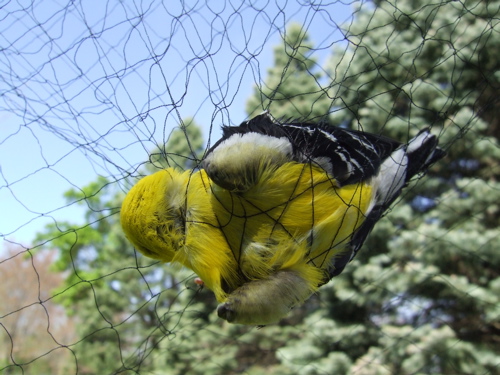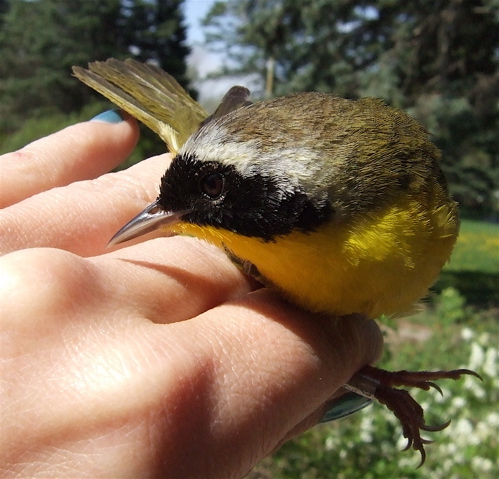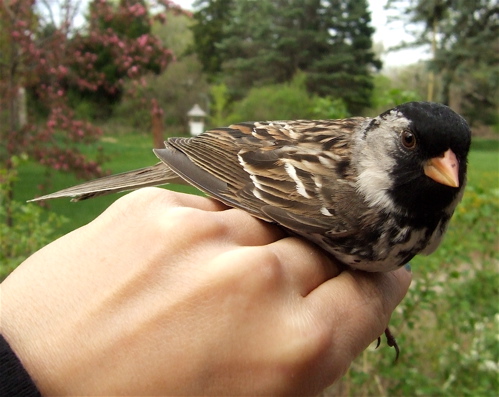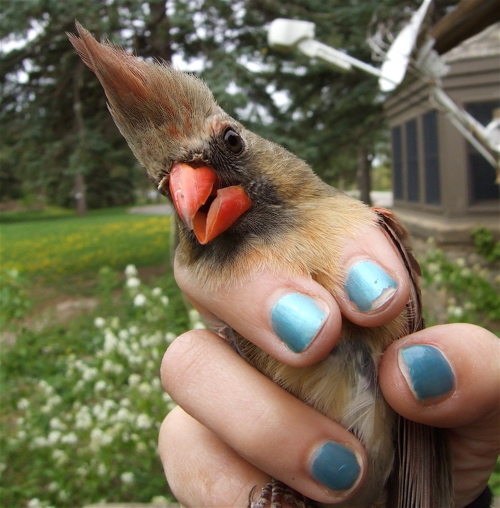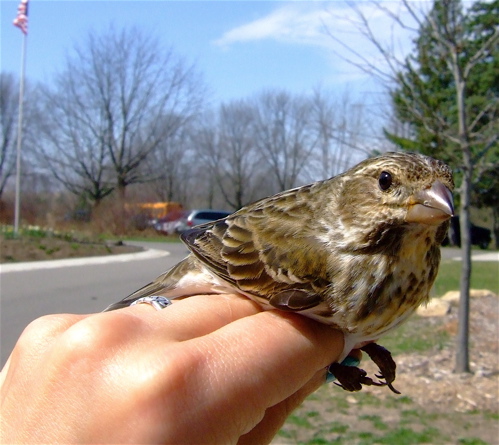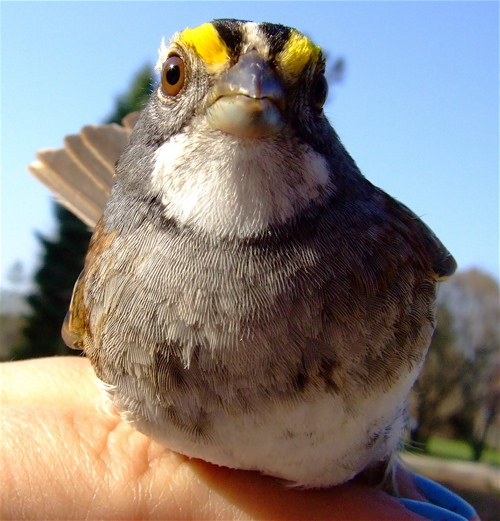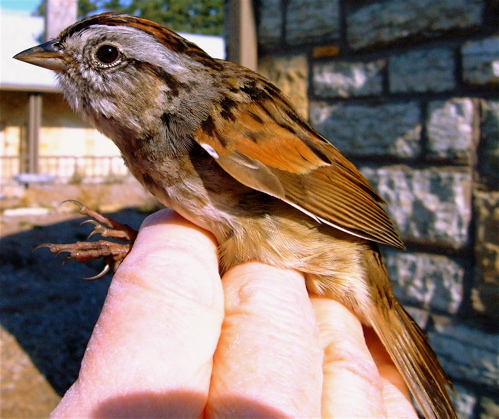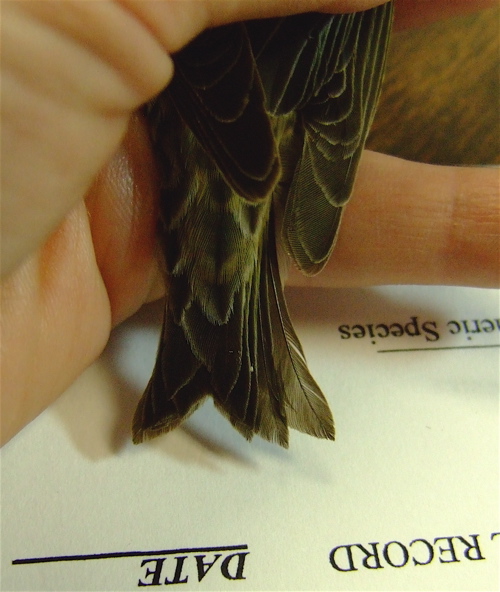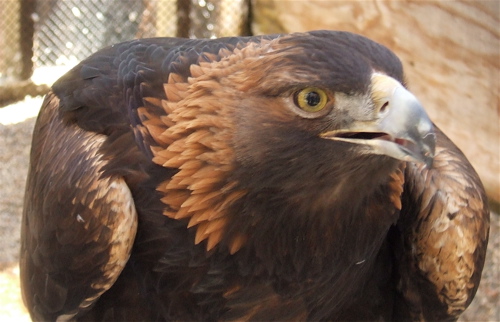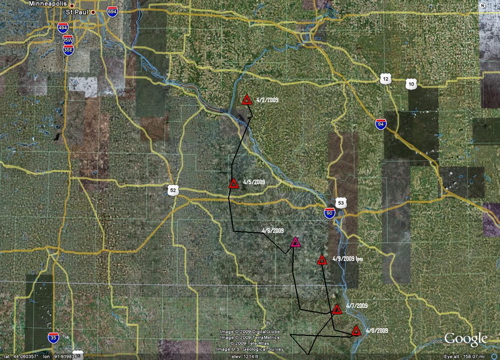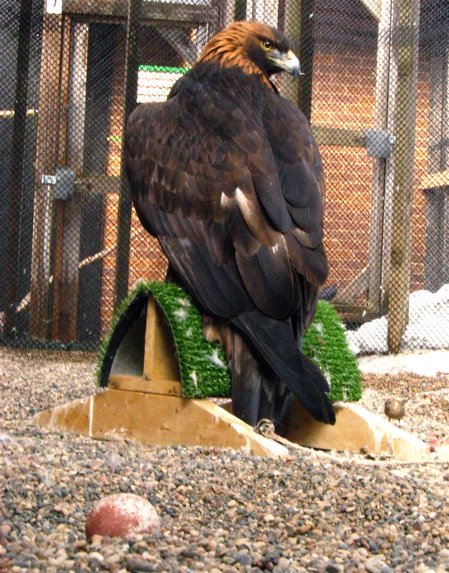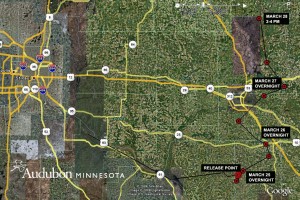Hey, if you enjoyed the waxwing post from earlier, check out Minnesota Birdnerd's photos of banding waxwings are Carver Park, it's very sweet. And speaking of banding, I surprised the Friday banding crew at Carpenter Nature Center by showing up for banding the day before I leave for Kazakhstan. Yes, I should have been packing, but it's spring migration and when I missed this date last year (because of the World Series of Birding), I missed cool stuff like indigo buntings...and I wasn't disappointed today.
I also needed to go because if I think about where I'm going too much, I kind of freak out. I've read about Kazakhstan and have always wanted to go, so when this opportunity came my way to go with Swarovski to see the work they are doing with BirdLife International for the sociable lapwing (a fancy killdeer), I could not say no. But odd things hit me (and I'm sure part of it is the great bio I'm reading at the moment called Life List) like, this is the furthest distance I have ever been from Non Birding Bill since I met him in 1994. I've been out of the country, but not this far out of the country. It's odd to think that I'll be on the other side of the planet from him. So, going through my routine keeps me from freaking out with excitement and nervousness.
And I wasn't disappointed with banding today. We actually got in a male indigo bunting! This male is still has some brown and has not quite molted into his breeding plumage, but boy is he still a cool looking bird. It's interesting that up here, when these birds first return in the spring, you can see them at bird feeders eating white millet, Nyjer, and sunflower hearts. However, once the insects are out in full force, they don't visit feeding stations as often. It's always a treat to see one of these birds.
We had so many goldfinches int he nets, that I lost count of how many we banded. At one point, there was just a big group of them on the table to be processed. It seems like the males have turned bright yellow overnight. When I first approached the net to take out the above male goldfinch, I heard a familiar chipping noise. I looked down to find...
...a common yellowthroat. I took the yellowthroat, while my more experienced friend Jen took the higher goldfinch. It was fun to see warbler up close again.
I fun surprise in the net was this Harris sparrow. Just a few weeks ago I was in Oklahoma watching flock of Harris sparrows (still molting into their breeding plumage), I wondered if this guy came up through Minnesota? After handling warblers and goldfinches, this bird felt really robust in my hand. And I suddenly realized how big this bird is when Jim Fitzpatrick was at the table banding a rose-breasted grosbeak and it took the same band size as this Harris sparrow!
And speaking of banding grostbeaks, what bander's day is complete without the skin splitting cardinal? This female was originally banded last year and she's out for revenge. She nailed me several times, even after I finished reading her band number. I took her outside, opend my fingers to let her fly away and she gave me one last hard chomp before taking off. One of the other banders got a great laugh out of it. Always happy to provide comic relief.
As I was out and about, I noticed that catbirds were back at Carpenter in full force, many were practcing their territory songs. They were mimicing, but not quite as well as they could have. I wondered if these were males getting their songs ready to impress the females. Here's one, and you will also hear the "meow" sound that the birds are famous for:
[youtube]http://www.youtube.com/watch?v=XqtigoZ6NBg[/youtube]
The same catbird flew to another perch and you could clearly see it was banded.
[youtube]http://www.youtube.com/watch?v=8cYOMpgawd4[/youtube]
The bird was singing in an area near the orchard where we have nets set up. They seem to be the most productive in the late summer and early fall--especially when young catbirds are learning to fly. I wondered if this was a male that hatched last year and is practicing his song to attempt breeding? Tough to say without actually reading the band.
Okay, I seriously need to get down to packing.


